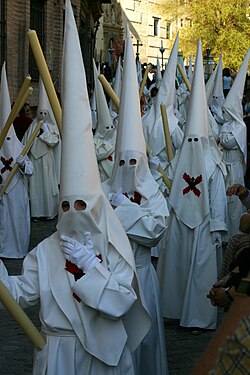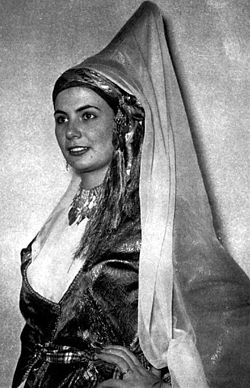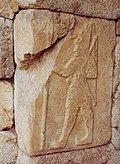| Type | Image | Notes |
|---|
| Bashlyk |  | This traditional Turkic and Cossack cone-shaped headdress hood is usually made of leather, felt or wool. It is an ancient round topped felt bonnet with lappets for wrapping around the neck. |
| Capirote |  | Historically, the capirote was a cardboard cone worn in Spain. |
| Capuchon |  | A capuchon is a ceremonial hat worn during the Mardi Gras celebration in the Cajun areas of southwestern Louisiana, known as the Courir de Mardi Gras . |
| Asian conical hat |  | Known as a sedge hat, rice hat, paddy hat or coolie hat, this simple style of hat is often made of straw. It originated in East, South and Southeast Asia, particularly Vietnam, China, Japan, Korea, Cambodia, Philippines, India, Bangladesh and Indonesia. |
| Dunce cap |  | In popular culture, the dunce cap is typically made of paper and often marked with a D or the word "dunce", and given to schoolchildren to wear as punishment by public humiliation for misbehaviour and, as the name implies, stupidity. |
| Fulani hat |  | A conical plant fiber hat covered in leather both at the brim and top, worn by men of the Fulani people in West Africa. |
| Golden hat |  | This type of hat is a very specific and rare type of archaeological artifact from Bronze Age Europe. |
| Hennin |  | Most commonly worn in Burgundy and France by women of the nobility, the hennin appears from about 1430 onwards. Later, though, this hat spread more widely, especially in the truncated form. Typically, the hennin was 12 to 18 inches (30 to 45 cm) high, generally accompanied by a veil that usually emerged from the top of the cone and was allowed to fall onto the woman's shoulders. |
| Hogeon |  | This Korean traditional headgear for young boys aged one year to five years has flaps, and is a type of gwanmo (관모),. |
| Jewish hat |  | The Jewish hat was often white or yellow, worn by Jews in Medieval Europe and some of the Islamic world. |
| Kalpak |  | This high-crowned cap is usually made of felt or sheepskin. It is worn by men from southeastern Europe, Iran, Central Asia and the Caucasus. |
| Kasa |  | A Kasa is any of several kinds of traditional hats of Japan. |
| Madhalla |  | Traditional straw hat from Yemen. |
|
| Mokorotlo |  | A straw hat used traditionally by the Sotho people. It serves as the national symbol of Lesotho. |
| Nightcap |  | This garment is worn while sleeping, often with a nightgown, for warmth. |
| Nón lá |  | Nón lá is a type of Vietnamese headwear used to shield the face from the sun and rain. |
| Party hat |  | A party hat is generally a playful conical hat made with a rolled up piece of thin cardboard, usually with designs printed on the outside and a long string of elastic going from one side of the cone's bottom to another to secure the cone to one's head. |
| Phrygian cap |  | The Phrygian cap is a soft cap with the top pulled forward. Associated in antiquity with the inhabitants of Phrygia, a region of central Anatolia; from the French Revolution a symbol of revolution, liberty and republicanism – and in modern times with Smurfs. |
| Pileus |  | The pileus was, in Ancient Greece and Rome, a brimless, felt cap, somewhat similar to a fez. |
| Salakot |  | Usually made from rattan or reeds, this is a traditional hat from the Philippines. |
| Sugar loaf |  | This very tall, tapering hat was first worn in medieval times. Its name comes from the loaves into which sugar was formed at that time. [19] The sugar loaf hat is a kind of early top hat ending in a slightly rounded conical top. [20] |
| Tantour |  | Similar to the hennin, this woman's headdress was popular in the Eastern Mediterranean during the 19th century. [21] [22] The most ornate tantours were made of gold and reached as high as 30 inches (76 cm). Some were encrusted with gems and pearls. The tantour was held in by a ribbons tied around the head. A silk scarf was wound around the base with a white veil attached to the peak. [23] |
| Topor |  | A topor is worn during Bengali Hindu wedding ceremonies. It is usually white, fragile, and made of sholapith. |
| Witch hat |  | A tall, conical hat with a wide brim, which is typically black. It is commonly associated with European witches. |
































